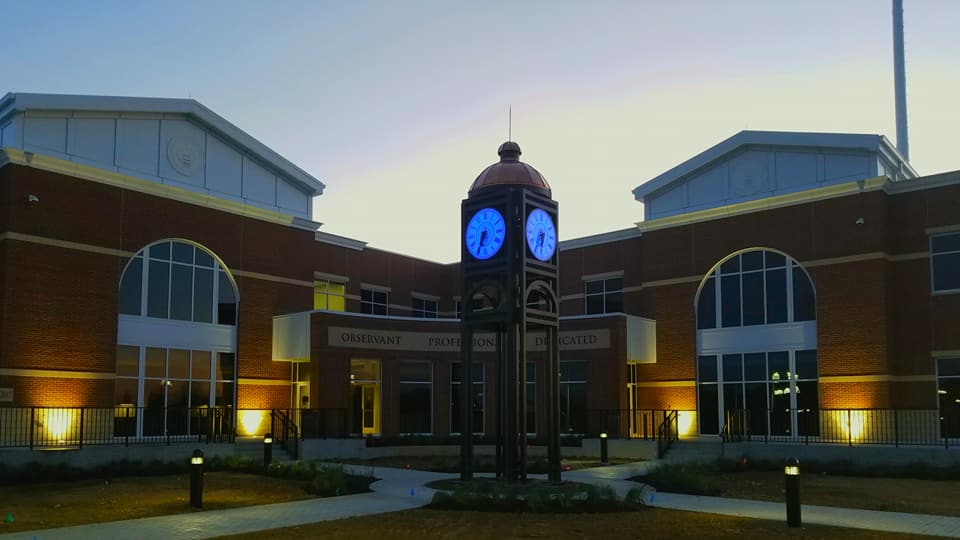
The O’Fallon, Missouri Police Department recently opened a world-class Justice Center that includes a VirTra V-300 use of force simulator. O’Fallon Police Department range master and training officer Ed Smith wasted no time in developing innovative training curriculums for O’Fallon’s officers featuring their V-300 that will maximize training time and help conserve department resources.
Smith designed two, four, and eight hour training courses, but is especially proud of the two-hour training block, as it is a curriculum that involves two simulated sessions in the V-300 along with live fire training and is designed to give officers confidence that they can handle any volatile situation that could come their way. The program takes place during an officer’s shift and only requires two trainers to run – a marked departure from the days of all-day range training that stretched his training staff to its limit.
For the two-hour program Smith calls in officers during their shifts to meet him in the V-300 training room, and from there they get a simulated dispatch call and go immediately into their first VirTra scenario, which could involve a Glock, Axon® TASER® or rifle. Smith uses this session to evaluate the officer’s fundamentals and tactical skills, including trigger squeeze, sightline issues and body position. He then makes any necessary corrections and adjustments before the officer goes to the indoor firing range to internalize the feedback and practice any adjustments using live ammo. After the officer cleans their weapon, they go immediately into their second scenario in the V-300, where the officers are again placed into a situation that mirrors a real-life encounter that forces them to make split-second decisions under stress.
During the debriefing process that follows, the instructor quizzes the trainee on how they dealt with subjects using verbal commands, and on department use of force policy and relevant case law. Because the V-300 scenarios are so incredibly life-like, they allow Smith’s training curriculum to not only satisfy state firearms skills training requirements, but also interpersonal and legal training hours as well. The two-hour sessions also allow instructors to spot potential trouble spots in individuals’ performance that could suggest something problematic in the way an officer makes decisions and reacts in a potential use of force situation. They can then flag these to an officer’s superior and schedule the officer for additional training to correct any shortcomings and ensure that O’Fallon is putting the best-trained officers on the street to keep fellow officers and the public safe.
Since the entire three-part curriculum can take place in a two-hour block during an officer’s scheduled shift, it helps address the challenges of finding time to keep up with the state-required skills training. Officer Smith was also able to use a VirTra-provided library of scenarios that “saved a ton of time and made it easy” for him to get the program registered with the state, and the department no longer has to send its officers to an academy to get legal and interpersonal skills training done, greatly simplifying the process for officers and the department alike. “Now we just do it here on a VirTra system,” says Smith, who has gotten great feedback from officers that have gone through the training. One officer couldn’t believe they squeezed in so much learning into one two-hour session, and another said he would “definitely feel better about going out on the next call” after being put through the paces in a VirTra system.
Smith is pleased that O’Fallon’s officers have found the new curriculum helpful, and in time he even sees developing similar training curriculums for officers from other local law enforcement agencies, which could allow for the department to see a further return on its investment through cost-sharing arrangements for facility use and staff time.
Recently Published
Join Our Newsletter







